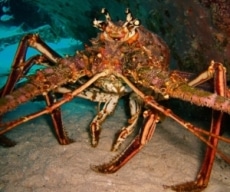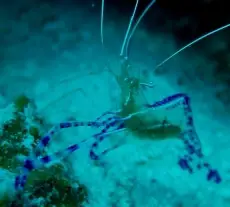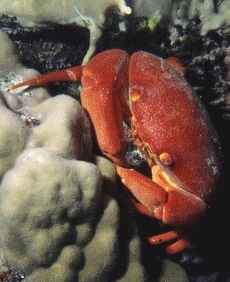Coral Reef Crustaceans
Coral reef crustaceans include such familiar animals as shrimps, lobsters, and crabs. Members of the Class Crustacea are common throughout coral reef ecosystems, and are found in all three primary coral reef zones.
Like the related arthropods such as insects, spiders, centipedes, etc., crustaceans have segmented bodies, external skeletons, and numerous, jointed limbs. However, unlike most arthropods which are strictly or mainly terrestrial, crustaceans are primarily aquatic creatures, mostly marine.
Crustaceans play a host of different roles in the ecology of coral reef communities. Some are scavengers, cleansing the reef of decaying animal remains. Others are active predators or omnivores. Many are preyed upon by coral reef fishes.
Here, we discuss the three most common types of crustaceans found in coral reef ecosystems: spiny lobsters, shrimps, and crabs.



